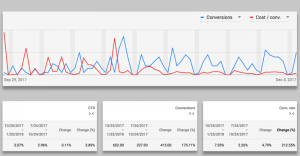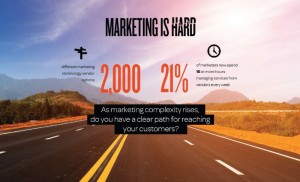— September 17, 2019

rawpixel / Pixabay
We’re quickly approaching budget season, which means many business leaders will spend weeks crunching numbers and forecasting for 2020. While many businesses do simple growth calculations to project their revenues and expenses for the coming year, the more successful businesses apply a more strategic process to budgeting that not only informs their business plan for the year, but also helps them to potentially innovate and outmaneuver the competition. When starting the budgeting process, most companies begin with a review of current performance against last year and this year’s targets (actuals to forecast). This provides a starting benchmark for next year’s budget. From there, many companies typically use either traditional or zero-based budgeting. Traditional budgeting takes historical performance and modifies it for the future, while zero-based budgeting creates a completely new budget from the ground up with no regard for financial history. Both of these approaches have its pros and cons but incorporating aspects of both approaches often yields the best results.
At Creative Business we encourage businesses to carefully incorporate change into their strategic plan and budget. While its often beneficial to track your budget to historical performance, you don’t want to get too comfortable in your financial assumptions—any major changes can unexpectedly throw off your numbers for the year and put your company in an uncomfortable position. Annual planning should start with changes that are outside your control before you consider any changes you want to make internally.
Evaluating threats to find opportunities
There are a number of changes outside your control that could potentially affect your business: market forces, labor markets, new government policies or tariffs, technological developments, cultural or political movements and even climate change. These issues will have the biggest impact on your products, employees, sales and customers as well as your access to capital and ability to move to new markets. Although it’s good to have an eye on the long-term, the annual plan is for the short-term, so consider the year ahead.
Some potential questions you may want to ask:
- What does the supply and demand for my business look like? What are my competitors planning? Are there any major changes to our customer base?
- Could an economic downturn or recession affect sales? How might currency fluctuations affect sales overseas? How might it affect our supply chain?
- Should we anticipate new government regulations that affect our business? How would new tariffs affect our business? How might compliance issues affect our resources?
- Are there new technologies out there that might hurt or help us? What new tech developments affect us in manufacturing, logistics, fulfillment, operations, marketing or sales? Are we overly dependent on third-party technologies that might change suddenly?
- What’s happening culturally or politically that affects our business? What impact will the 2020 election have on the markets?
- How might climate change affect our business? Will changes in weather or seasonality affect sales or operations?
This exercise can help to unveil new strategic opportunities that fit with your long-term vision of the business. It gives you the chance to explore some of the existing or potential pain points of the business and come up with creative solutions. Worried that your supply chain might be affected by a potential trade war with China? Now might be the time to explore nomadic sourcing or mobile factories that allow your business to quickly shift production to other geographies. Worried that changes to Amazon’s rules might affect one of your biggest sales channels? Now might be the time to reconsider your e-commerce strategy and explore new technologies like blockchain or new platforms like Public Market.
Integrating changes and opportunities into your annual plan
Once you’ve identified the biggest threats and opportunities to your business for the coming year you can build them into your annual plan and budget. Keep in mind that not every idea or opportunity will make sense for the short term or fit the long-term vision. Stay focused on the few opportunities that have the potential to generate outsized impact without putting yourself at too much risk—and of course, don’t put all your eggs in one basket. With your strategic plan in place you can now plan and budget for the things that you can control. This might include entering new markets, hiring staff, expanding your product line or services, investing in new technologies or changing processes to bring more efficiency to your operations. Think thoughtfully through your expenses and forecasts as a management team and question any financial and operational assumptions. Are my current pricing strategies profitable? Will price increases from my vendors affect costs of goods sold? What is the ramp up time for any marketing campaigns to effect sales? What is the ramp up time to hire and train a new team? What are the implementation times for new technologies and processes and when might we see ROI? A big mistake we often see in budgeting is assuming quick returns or quick timelines. A marketing campaign for a new product line may need months of preparation and planning before it’s available for sales. A new POS system might take weeks of implementation and staff training before you see gains in operational efficiency. In the meantime you must account for this in your budget.
Lastly, always add a buffer into your numbers so that you are protected from any unknowns. If you’re a business focused on profitability, having a 20% profit margin and positive cash flow in your budget gives you breathing room in case you miss your sales targets. An experienced CFO or financial advisor can help you to build in these margins into the annual budget.
The journey is as important as the destination itself
Implementing a rigorous planning and budgeting process is just as important as the actual plan. This is the plan your entire company must align on for an entire year, so it must be created with plenty of thought and care. Evaluate external threats and identify areas of opportunity. Budget for growth, but carefully calculate expenses and question financial assumptions. Maintain a buffer in your budget to protect from unexpected changes. By taking the time to account for change in your strategic plan, you can open up the mindset to produce truly innovative thinking and position your company for growth, stability and success in a constantly changing world.
Business & Finance Articles on Business 2 Community
(93)
Report Post







